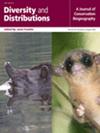Biodiversity Metric Selection and Their Applications for Spatial Conservation Planning
Abstract
Aim
On-the-ground conservation efforts require managers to balance various and sometimes conflicting conservation goals. For instance, areas important for conserving threatened and endangered species may have little spatial agreement with high functional redundancy. Using prioritisation tools can further complicate conservation prioritisations if conflicting diversity metrics identify different high-priority areas. We compared five community-level diversity metrics for birds across the conterminous US to identify how much agreement existed between each before and after using a prioritisation framework.
Location
Contiguous US.
Methods
We examined spatial agreement among metrics before (a priori) and after (a posteriori) prioritisation using integer linear programming. We compared a posteriori outputs for 10% and 30% conservation goals. We also assessed data layer correlation and agreement (i.e., overlap) a priori and a posteriori.
Results
As expected, the a priori diversity metrics were poorly to moderately correlated (median = 0.31, range = 0.11–0.71), but all a posteriori solutions had areas of agreement. Accordingly, our a posteriori metrics identified different areas as high priority for conservation, none aligning well with the current protected areas (mean = 13%–15% agreement). However, the a posteriori approach allowed us to include a continuity constraint (identify adjacent important pixels) and easily find areas of high-priority agreement.
Main Conclusions
Metric agreement depended on a priori or a posteriori evaluation, highlighting managers' challenges when deciding where and how to enact conservation. Given these challenges, a posteriori solutions best support multiple-objective, complex and large planning conservation problems. Importantly, all of our a posteriori maps agreed in areas, suggesting aggregates of several metrics could instill certainty in decision-making if prioritisation solutions were obtained at different times. Overall, our results underscore the critical importance of generating maps and metrics useful for on-the-ground management, carefully selecting biodiversity metrics that best reflect conservation goals and employing prioritisation software for generating conservation solutions.


 求助内容:
求助内容: 应助结果提醒方式:
应助结果提醒方式:


